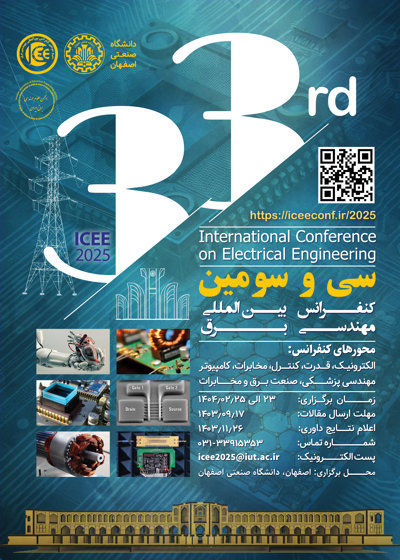0% Complete

نویسندگان :
کلمات کلیدی :
چکیده :
لیست مقالات بایگانی شده
Ali Anisi - Moosa Ayati - Yassin Riyazi - Ali Asadian
فرانک صید جانی - سبا کرمی میرعزیزی - هادی اشعریون
Yasin Heydarzadeh - Mehran Khanehbeygi - Sajad Sohrabian - Ziaddin Daie Koozehkanani
Amir Hossein Gholami - Amir Abulfazl Suratgar - Mohammad Bagher Menhaj - Mohammad Reza Hesamzadeh
سعید پورمیرزایی - وحید صفری دهنوی - مسعود شفیعی
Pourya Shirinshahrakfard - Amir Abolfazl Suratgar - Mohammad Bagher Menhaj - Gevork B. Gharehpetian
Amirhossein Solati - Javad Zeraatkar Moghaddam - Mehrdad Ardebilipour
Maryam Hajilou - Baharak Akhlaghi - Hosein Farzanehfard
نرگس شکوهی - محمد صادق هلفروش - ریحانه غفاری - حبیب اله دانیالی
Deniz Najafi - Behzad Ebrahimi





